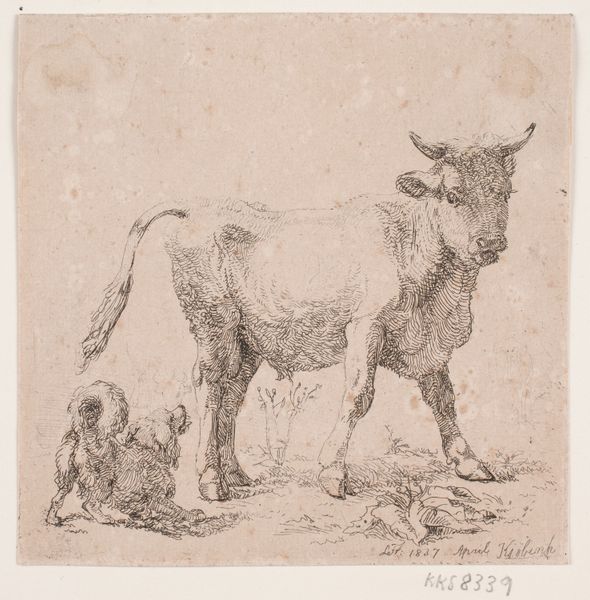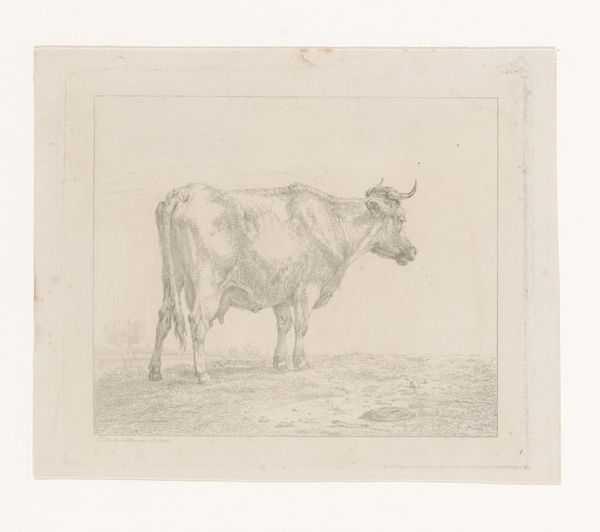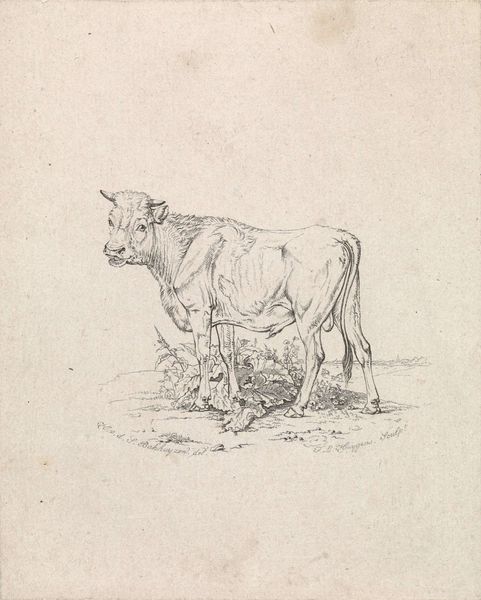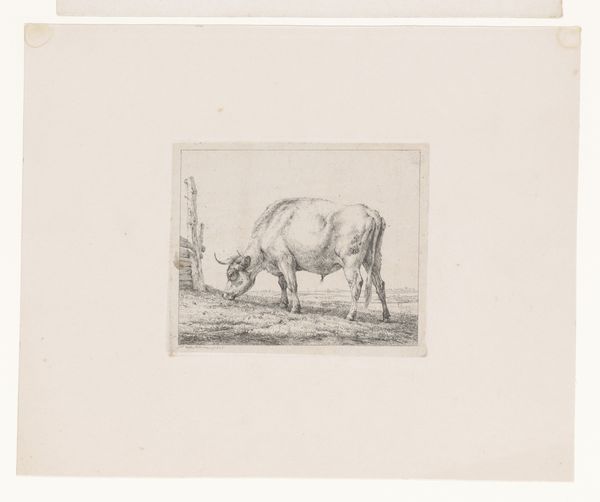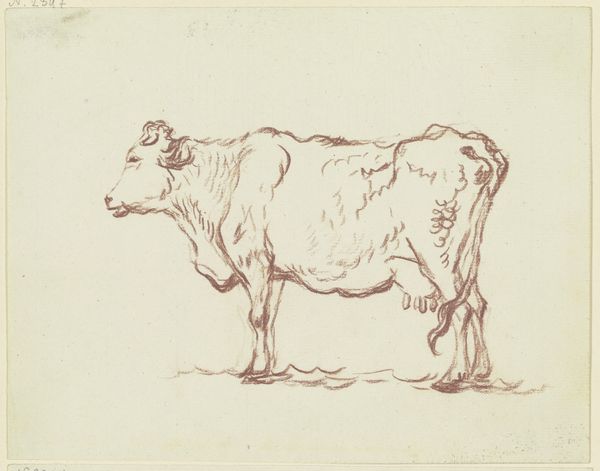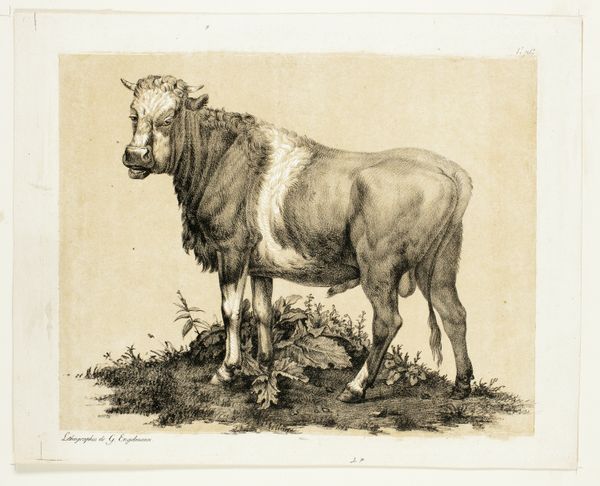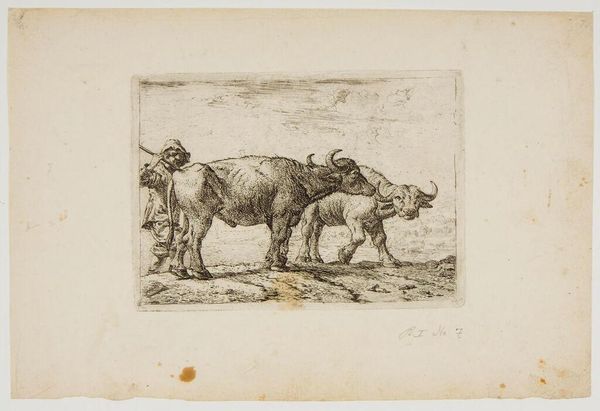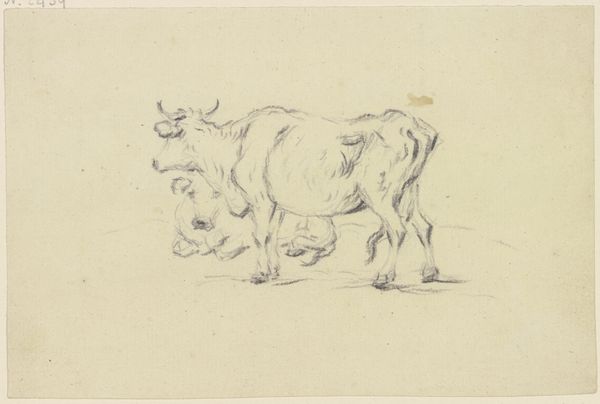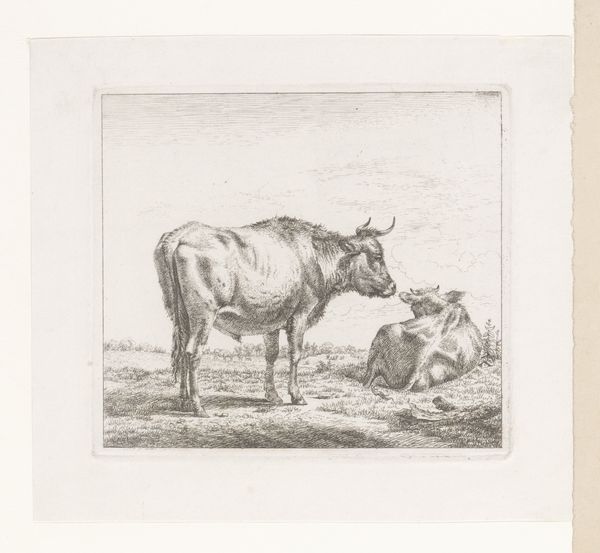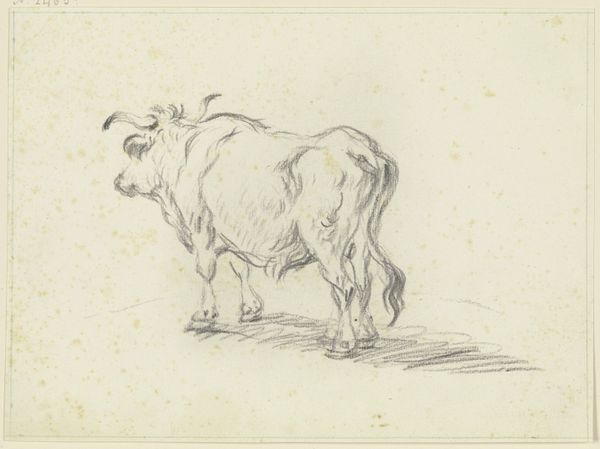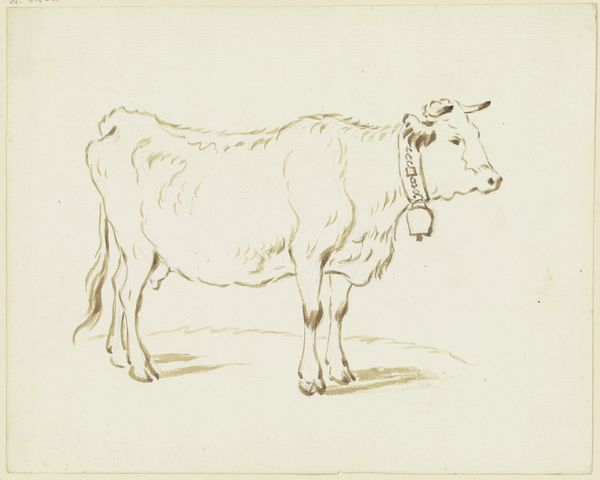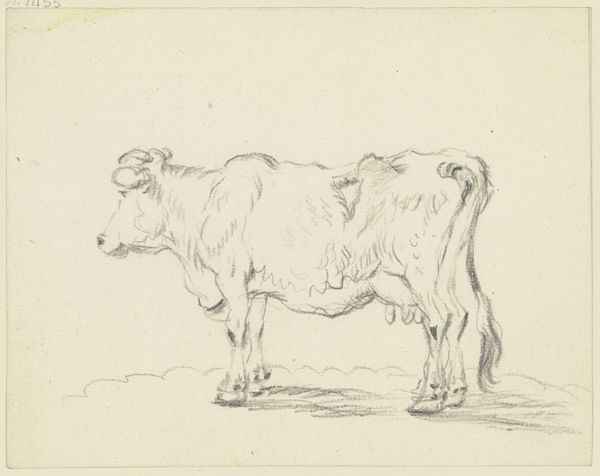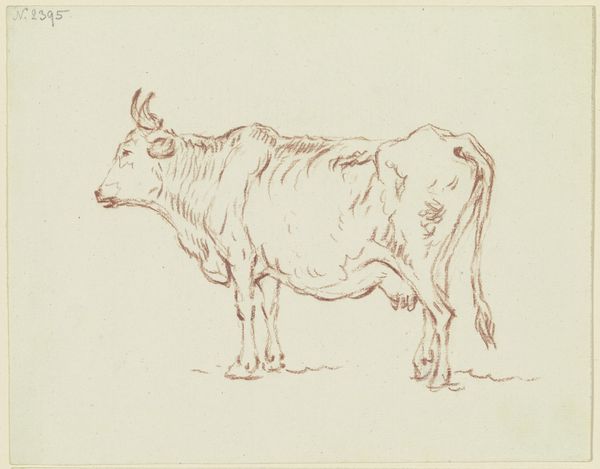
drawing, print, etching, engraving
#
drawing
#
animal
# print
#
etching
#
landscape
#
form
#
romanticism
#
line
#
genre-painting
#
engraving
#
realism
Dimensions: 83 mm (height) x 84 mm (width) (plademaal)
Lorenz Frølich created this etching of a calf and a dog sometime in the 19th century. The printmaking process would have involved coating a metal plate with wax, then drawing through the wax to expose the metal. When the plate was dipped in acid, the drawn lines would be etched into the surface. Frølich’s skill is evident in the confident lines that define the animals’ forms. The etching technique, with its capacity for fine detail, allows for a close observation of the natural world. Notice how the texture of the calf’s coat contrasts with the dog’s fur, achieved through variations in line weight and density. But this work also speaks to a broader social context. Printmaking was a key technology in the rise of mass media, making images widely accessible. While Frølich was a trained artist, his print participates in a larger sphere of visual communication that goes beyond traditional art history. It reminds us that the story of art is also the story of labor, production, and the democratization of images.
Comments
No comments
Be the first to comment and join the conversation on the ultimate creative platform.
